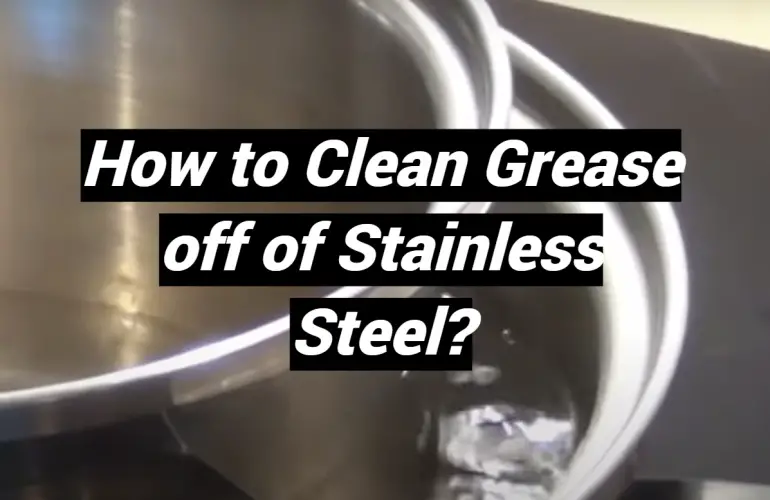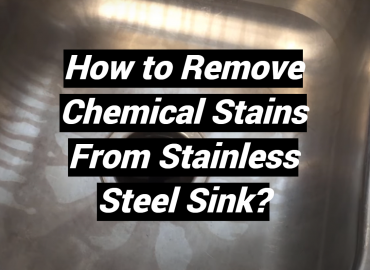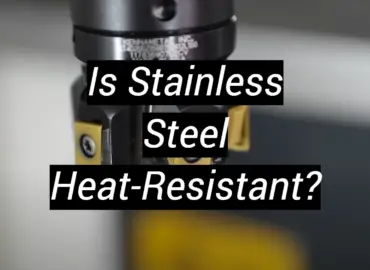Many people choose stainless steel appliances for their kitchen because it resists smudges and is easy to wipe down. However, if grease builds up on the surface, it can be difficult to remove. In this blog post, you will learn how to efficiently and effortlessly remove grease from stainless steel!
What Is Stainless Steel? How Does It Differ from Other Metals?
Stainless steel is an alloy of iron, carbon, and chromium. It is also called “inox” steel, because it is resistant to oxidation (rusting). The chromium gives the metal its “stainless” property.
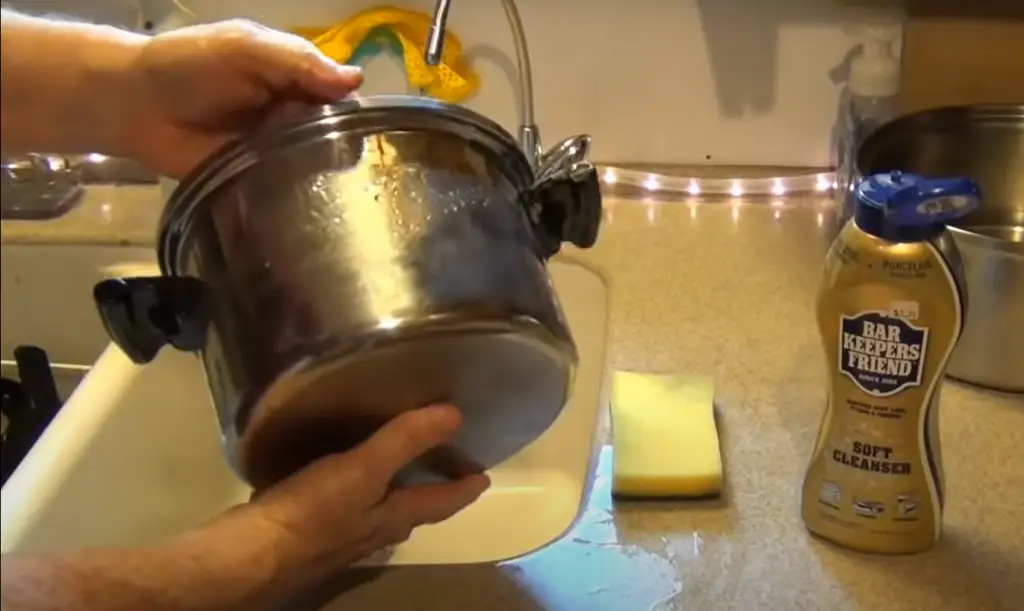
Other metals, such as aluminum and copper, are also resistant to rusting, but they are not as resistant as stainless steel. This is because the chromium forms a thin film on the surface of the metal that prevents oxygen from reaching the iron. [1]
How to Clean Grease off of Stainless Steel?
Cleaning Before Grease Settles
Grease is one of those substances that can be a little bit tricky to remove. It’s not quite like dirt or dust, which can simply be wiped away. Instead, grease tends to linger and can even build up over time if it’s not removed properly. This can be especially true for stainless steel surfaces, which are often susceptible to fingerprints and other forms of smudging.
Before you start cleaning, it’s important to understand the basics of grease removal. In general, there are two main ways to remove grease: through chemical action or through physical action. Chemical action involves using a solvent to break down the grease, while physical action involves using something like a brush or sponge to physically remove the grease.
One of the most effective ways to remove grease is to use a combination of both chemical and physical action. This usually involves first applying a solvent to help break down the grease, and then using a brush or sponge to scrub away any remaining residue. [2]
Which Solvents Are Best for Grease Removal?
There are a variety of solvents that can be effective for removing grease. Some of the most common include:
- Dish soap: Dish soap is often used as a pre-treatment for greasy surfaces. It’s relatively gentle and can be effective at cutting through light layers of grease.
- Lemon juice: Lemon juice is another common pre-treatment for greasy surfaces. Like dish soap, it’s gentle and can help to cut through light layers of grease.
- Baking soda: Baking soda is a mild abrasive that can be used to scrub away tough grease deposits. It’s often used in combination with other solvents, such as lemon juice or vinegar.
- Vinegar: Vinegar is a strong acid that can be effective at breaking down grease. However, it’s also quite harsh and can damage some types of surfaces. As such, it’s usually best to use vinegar as a last resort.
Tackling Heavier Grease Stains
If you’re dealing with tougher grease stains, you’ll need to put in a little more elbow grease. Luckily, there are a few different methods you can use to get your stainless steel looking shiny and new again.
One option is to make a paste out of baking soda and water. Apply the paste to the affected area with a damp cloth and scrub until the stain is gone. You can also try using white vinegar. Simply pour it on a clean cloth and wipe down the greasy area. For both of these options, be sure to rinse well afterwards with warm water and dry completely.
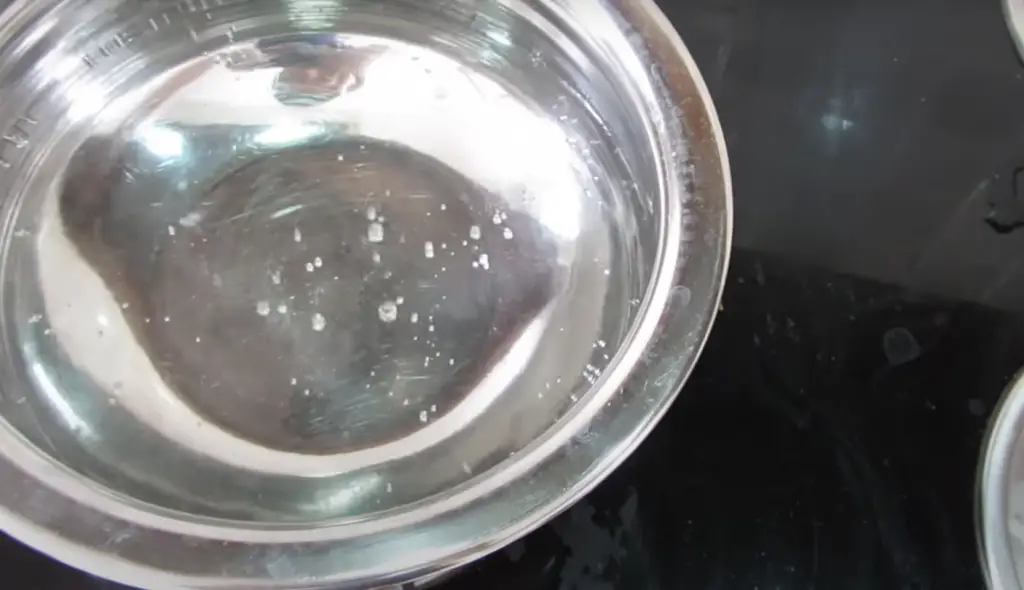
If you’re still having trouble getting rid of the grease, you can try using a commercial stainless steel cleaner.
Apply the cleaner with a soft cloth, then wipe clean with a damp rag. You should now have sparkling clean stainless steel that’s free of any grease stains!Removing Stubborn and Burnt Grease Stains from Stainless Steel
Stainless steel is a popular material for many appliances and cookware items. Its durability and easy-to-clean surface make it ideal for busy households. However, one downside to stainless steel is that it can show fingerprints and smudges easily. Grease is also a common issue, as it can build up over time, especially on stovetops and range hoods.
If you’re struggling to remove grease stains from your stainless steel surfaces, here are a few tips to help get the job done.
- Apply dish soap or degreaser directly to the stain.
- Scrub the area with a sponge or scrub brush.
- Rinse the area with warm water and dry with a soft cloth.
- Repeat as necessary until the grease stain is gone.
- For tougher stains, you may need to use a stainless steel cleaner or polish. [3]
Cleaning Fingerprints
Cleaning smudges and fingerprints from your stainless steel appliances can be easily done with a little elbow grease and the right cleaner. All you need is a gentle cleanser and a soft cloth. Apply the cleanser to the cloth, not directly onto the appliance. Rub in circular motions until all of the fingerprints are removed. Wiping in the direction of the grain will help to avoid streaks.
How Not To Clean Stainless Steel
Cleaning grease off of stainless steel can be a tricky task. There are a few things that you should avoid doing in order to keep your stainless steel looking its best.
One thing to avoid is using harsh chemicals or abrasive cleaners on your stainless steel. These can damage the finish and leave it looking dull.
Another thing to avoid is using scouring pads or scrubbers. These can also damage the finish of your stainless steel.
The best way to clean grease off of stainless steel is to use a mild detergent and a soft cloth. You can also try using white vinegar or baking soda. These natural substances will safely remove grease without damaging your stainless steel. [4]
Homemade vs. Commercial Stainless Steel Cleaners
Stainless steel is a common material found in many kitchens. It is durable and easy to clean, but sometimes grease can build up and be difficult to remove. There are many different ways to clean grease off stainless steel, but some methods are more effective than others.
One way to clean grease off stainless steel is to use a commercial cleaner. These cleaners are designed specifically for stainless steel and can be purchased at most hardware stores.
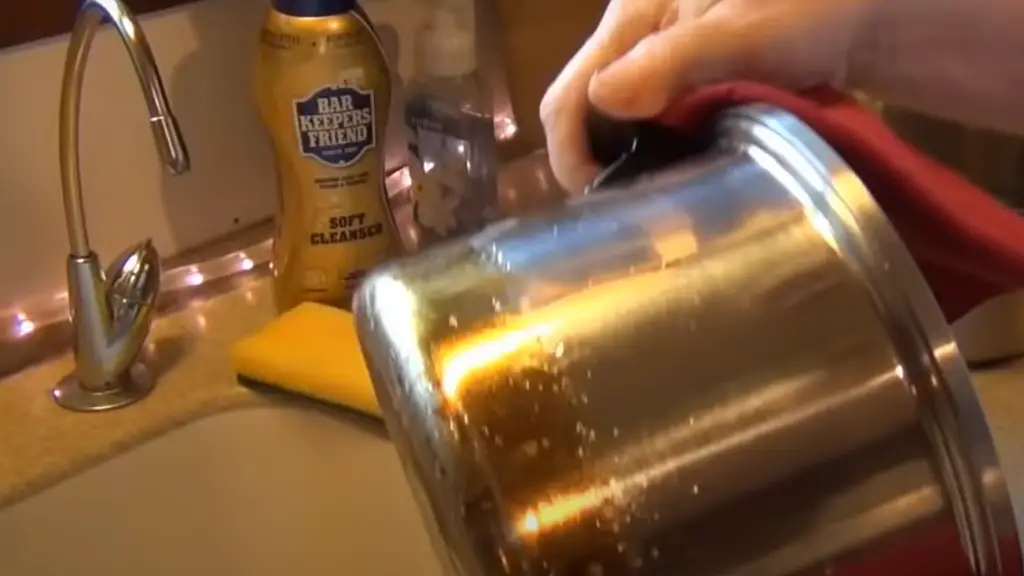
Commercial cleaners usually come in aerosol cans or spray bottles and can be applied directly to the surface. Some commercial cleaners may require the use of a cloth or sponge to wipe away the grease, while others may need to be rinsed off with water.
Another way to clean grease off stainless steel is to use a homemade cleaner. There are many different recipes for homemade stainless steel cleaners, but one of the most popular is made with vinegar and baking soda.
To make this cleaner, simply mix equal parts vinegar and baking soda together in a bowl. Then, apply the mixture to the greasy surface and scrub with a sponge or cloth. Rinse the area with water when finished.
Both commercial and homemade cleaners will effectively remove grease from stainless steel, but it is important to remember that any cleaner can damage the surface if used incorrectly. Always test cleaners in a small area before using them on the entire surface. If you are unsure about how to properly clean your stainless steel, contact a professional for help.[5]
Does Dawn Dish Soap Dissolve Grease?
If you’re looking for a natural way to dissolve grease, look no further than your kitchen sink. That’s right, Dawn dish soap can be used to clean stainless steel appliances and surfaces.
The dish soap is gentle enough not to damage the finish on your appliances, yet tough enough to cut through stubborn grease and grime. Plus, it’s a convenient way to clean since you likely already have dish soap on hand.
Here’s how to clean grease off stainless steel with Dawn dish soap:
- Wet a sponge or cloth with warm water and add a squirt of Dawn dish soap.
- Rub the wet sponge or cloth over the greasy area in a circular motion.
- Rinse the area with warm water and dry with a clean towel.
You may need to repeat this process a few times for tough grease stains. But overall, using Dawn dish soap is an effective and affordable way to clean grease off stainless steel. Give it a try the next time you’re cleaning your kitchen!
How Long Will This Take To Clean?
It really depends on how bad the grease is and how large of an area you’re trying to clean. For a small spot, it might only take a minute or two. For a larger area, it could take up to 15 minutes or more.
Things That Hurt Stainless Steel
There are some things you should never use on stainless steel, no matter how tough the grease or grime may be. Steel wool and abrasive pads will scratch the surface and dull the finish. Bleach and other harsh chemicals can damage and discolor stainless steel. And while vinegar is a mild acidic cleaner, it’s still acidic enough to etch the surface of your stainless appliances if used too often or left on for too long.
Alternative Methods To Remove Grease from Stainless Steel
There are a few different ways that you can remove grease from your stainless steel without using any harsh chemicals.
One way is to mix together equal parts baking soda and water to form a paste. Rub the paste onto the greased area with a soft cloth in a circular motion. Rinse the area clean with warm water and dry it off with a towel.
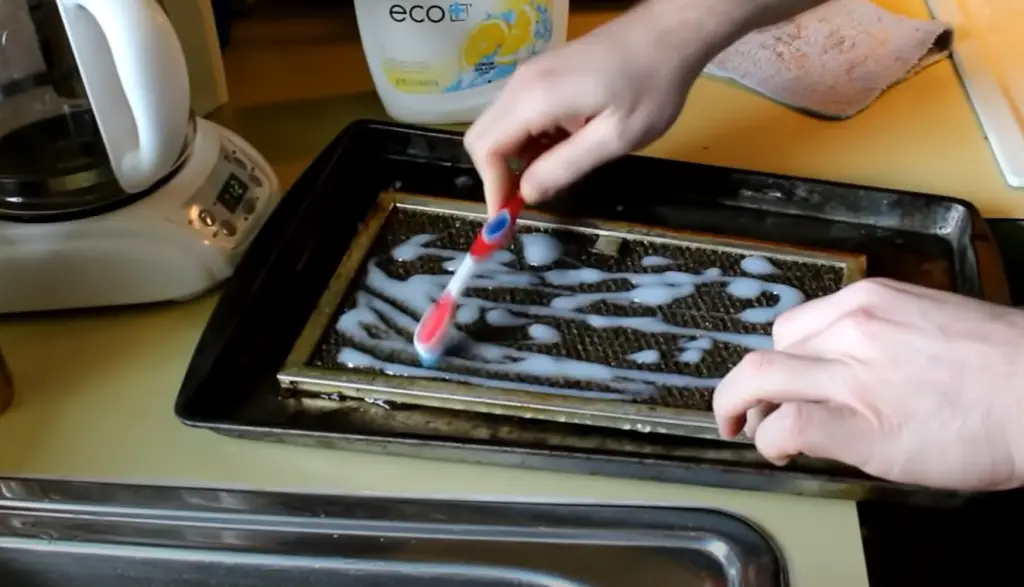
Another way is to make a vinegar solution by mixing together one part white vinegar and one part water. Rub the solution onto the greased area with a soft cloth in a circular motion. Gently clean the area with warm water and dry it until it is no longer damp.
If you have stubborn grease that won’t come off with either of these methods, you can try using a little bit of rubbing alcohol on a soft cloth. Rub the alcohol onto the greased area in a circular motion. Rinse the area clean with warm water and dry it off with a towel.
Tips for Preventing Grease Buildup
One way to prevent grease from building up on your stainless steel appliances is to wipe them down after every use. This will remove any grease or oil that has been deposited on the surface and will make it easier to clean if grease does build up.
Another way to prevent grease buildup is to choose cooking oils that have a high smoke point. These oils are less likely to cause splattering and will be less likely to stick to your appliances.
Finally, make sure to clean your stainless steel appliances regularly with a quality cleaner designed specifically for use on stainless steel. This will help to remove any grease or dirt that has been deposited on the surface and will keep your appliances looking their best.
How to Maintain Stainless Steel?
Stainless steel is a beautiful material that can add a touch of class to any kitchen. But like all materials, it requires some care and maintenance to keep it looking its best.
One way to maintain your stainless steel appliances is to wipe them down after every use. This will remove any grease or oil that has been deposited on the surface and will make it easier to clean if grease does build up.
Another way to maintain your stainless steel is to choose cooking oils that have a high smoke point.
Finally, make sure to clean your stainless steel appliances regularly with a quality cleaner designed specifically for use on stainless steel. This will help to remove any grease or dirt that has been deposited on the surface and will keep your appliances looking their best.
How Do You Clean a Stainless Steel Sink?
Stainless steel sinks are becoming more and more popular in American homes. They are durable and have a timeless look that goes with any kitchen decor. But even the best of us can get a little lazy when it comes to cleaning them. If you’re looking for the best way to clean a stainless steel sink, here are a few tips.
One of the easiest ways to clean a stainless steel sink is with vinegar and water. Simply mix equal parts vinegar and water in a bowl and use a clean cloth or sponge to scrub the sink. You may need to use a little elbow grease, but this method is usually very effective.
There are a number of cleaners on the market specifically designed for cleaning stainless steel. Be sure to read the instructions carefully before using any cleaner, as some may require that you rinse the sink afterwards.In general, it’s best to avoid using abrasive materials like scouring pads or steel wool when cleaning a stainless steel sink. These can scratch the surface of the sink and make it more difficult to keep clean in the future. If you do need to use something abrasive, be sure to use a soft cloth or sponge so you don’t damage the sink.

With a little care and attention, you can keep your stainless steel sink looking like new for years to come. Just be sure to follow these simple tips and you’ll have no trouble keeping it clean.
Common Things to Consider When Using Stainless Steel in the Kitchen
- Using the proper cleaners: You don’t want to use just any cleaner on your stainless steel. In order to avoid streaks and water spots, opt for a cleaner that is specifically made for stainless steel appliances. You can find these at most stores that sell cleaning supplies.
- Wiping with the grain: When you are cleaning your stainless steel, you will want to wipe in the direction of the grain. This will help to avoid any streaks or smears on the surface of your appliance.
- Drying thoroughly: Once you have cleaned your stainless steel appliance, be sure to dry it thoroughly. Water spots can be difficult to remove, so it is important to make sure that all residual moisture is removed before putting away your cleaning supplies.
Types of Stainless Steel
There are different types of stainless steel, so it is important to know which type you have before cleaning it.
- The most common type of stainless steel is the 304 grade, which is what most home appliances are made from. This type of stainless steel is very resistant to rust and corrosion, making it a good choice for kitchens.
- The next most common type of stainless steel is the 316 grade. This type is often used in commercial kitchens because it is even more resistant to rust and corrosion than the 304 grade.
- The last type of stainless steel is the 430 grade. This type is not as resistant to rust and corrosion as the other two types, but it is still a good choice for kitchens because it is less likely to show fingerprints and smudges.
FAQ
What dissolves grease on stainless steel?
There are a few household ingredients that can dissolve grease on stainless steel.
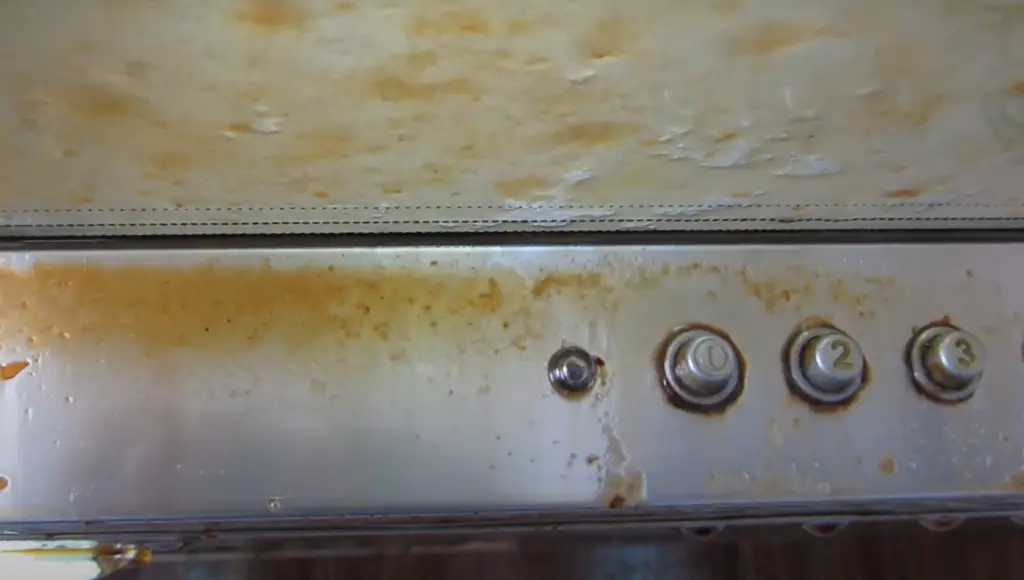
These include vinegar, baking soda, and dish detergent. Vinegar is acidic and can break down grease, while baking soda is a mild abrasive that can scour away grease. Dish detergent contains surfactants that can loosen and remove grease.
How do you clean greasy stainless steel?
To clean greasy stainless steel, start by wiping it down with a damp cloth to remove any surface dirt and grime. Then, make a cleaning solution by mixing equal parts water and vinegar, or water and dish soap. Apply the solution to the greasy areas using a sponge or cloth, and scrub until the grease is lifted. Rinse the area with clean water, and dry it with a soft towel. If the grease is stubborn, you can try using baking soda or CLR to help lift it.
How do you clean a stainless steel sink that is greasy?
The first step is to rinse the sink with hot water to remove any surface grease. Next, you will need to create a cleaning solution using warm water and dish soap. After applying the cleaning solution to the sink, use a soft cloth or sponge to scrub the area in a circular motion. Finally, rinse the sink with hot water and dry it off with a clean towel.
How do you get caked grease off stainless steel?
If there is caked on grease, you will need to use a little more elbow grease. First, make a cleaning solution using warm water and dish soap. Next, apply the cleaning solution to the affected area and scrub it with a soft bristled brush. Lastly, rinse the sink with hot water and dry it until it is no longer wet.
Will vinegar destroy stainless steel?
No, vinegar will not destroy stainless steel. In fact, it can be used as a cleaning solution for removing grease and grime. To use vinegar, mix equal parts water and vinegar in a bowl. Next, apply the solution to the affected area and scrub it with a soft cloth or sponge. Lastly, scald the sink with hot water and dry it off using a fresh towel.
Does WD-40 hurt stainless steel?
No, WD-40 will not hurt stainless steel. In fact, it can be used to remove grease and grime from the surface. To use WD-40, simply spray it on the affected area and wipe it off with a clean cloth. You may need to repeat this process a few times to remove all of the residue.
Will Windex ruin stainless steel?
Windex should not ruin your stainless steel. However, it is always best to test a small, hidden area first to be sure. If you do use Windex, be sure to wipe the area dry afterwards.
Can you use a magic eraser on stainless steel?
Yes, you can use a magic eraser on stainless steel. Just make sure to follow the manufacturer’s instructions.
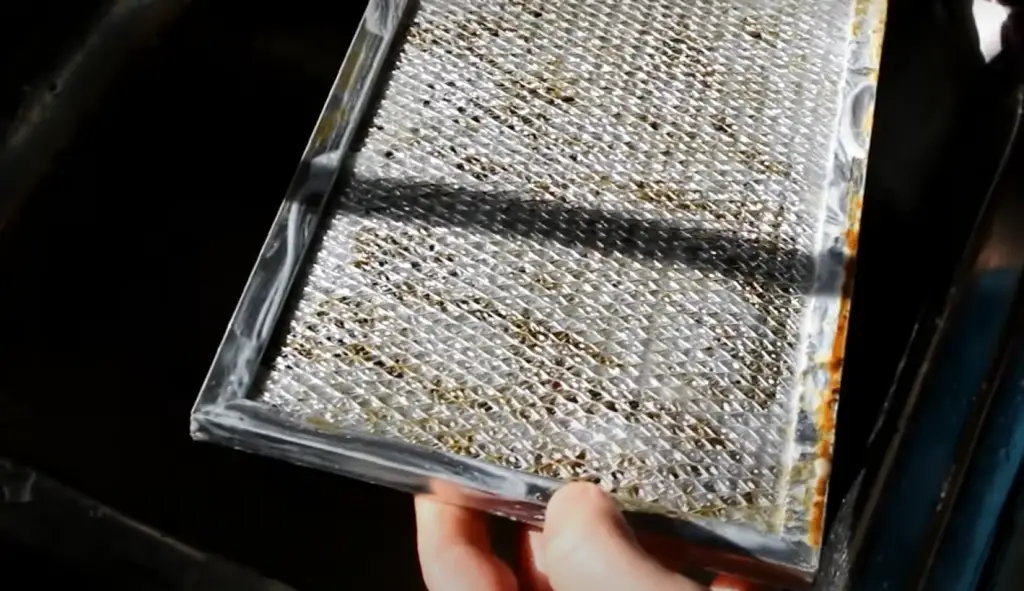
Usually, you’ll want to dampen the magic eraser first, then lightly rub the surface of the stainless steel. You may need to apply a little bit of pressure to get rid of tough grease stains. afterwards, rinse the area with clean water and dry it off with a soft cloth.
How do you make stainless steel look new again?
If your stainless steel is looking a little dull, you can try cleaning it with a vinegar and water solution. Simply mix equal parts vinegar and water in a bowl or bucket, then dip a clean cloth into the mixture. Rub the cloth over the surface of the stainless steel in a circular motion. Afterwards, rinse the area with clean water and dry it off with a soft cloth. If your stainless steel still looks dull after cleaning, you can try polishing it with a commercial stainless steel polish.
Useful Video: Cleaning Burned On Grease From Stainless Steel
Conclusion
The vinegar and baking soda method is the most effective way to clean grease off stainless steel. First, mix equal parts of vinegar and water in a spray bottle. Next, sprinkle baking soda on the greased area and scrub with a sponge or brush. Finally, rinse the area with warm water and dry with a clean cloth. For tough stains, you may need to repeat this process.
References:
- https://www.wikihow.com/Clean-Grease-Off-Stainless-Steel
- https://www.thermofisher.com/blog/metals/what-is-stainless-steel-part-i/
- https://www.nytimes.com/wirecutter/guides/how-to-clean-stainless-steel-pans/
- https://www.maids.com/blog/cleaning-stainless-steel/
- https://www.lucehome.sg/blog-article/homemade-stainless-steel-cleaner

